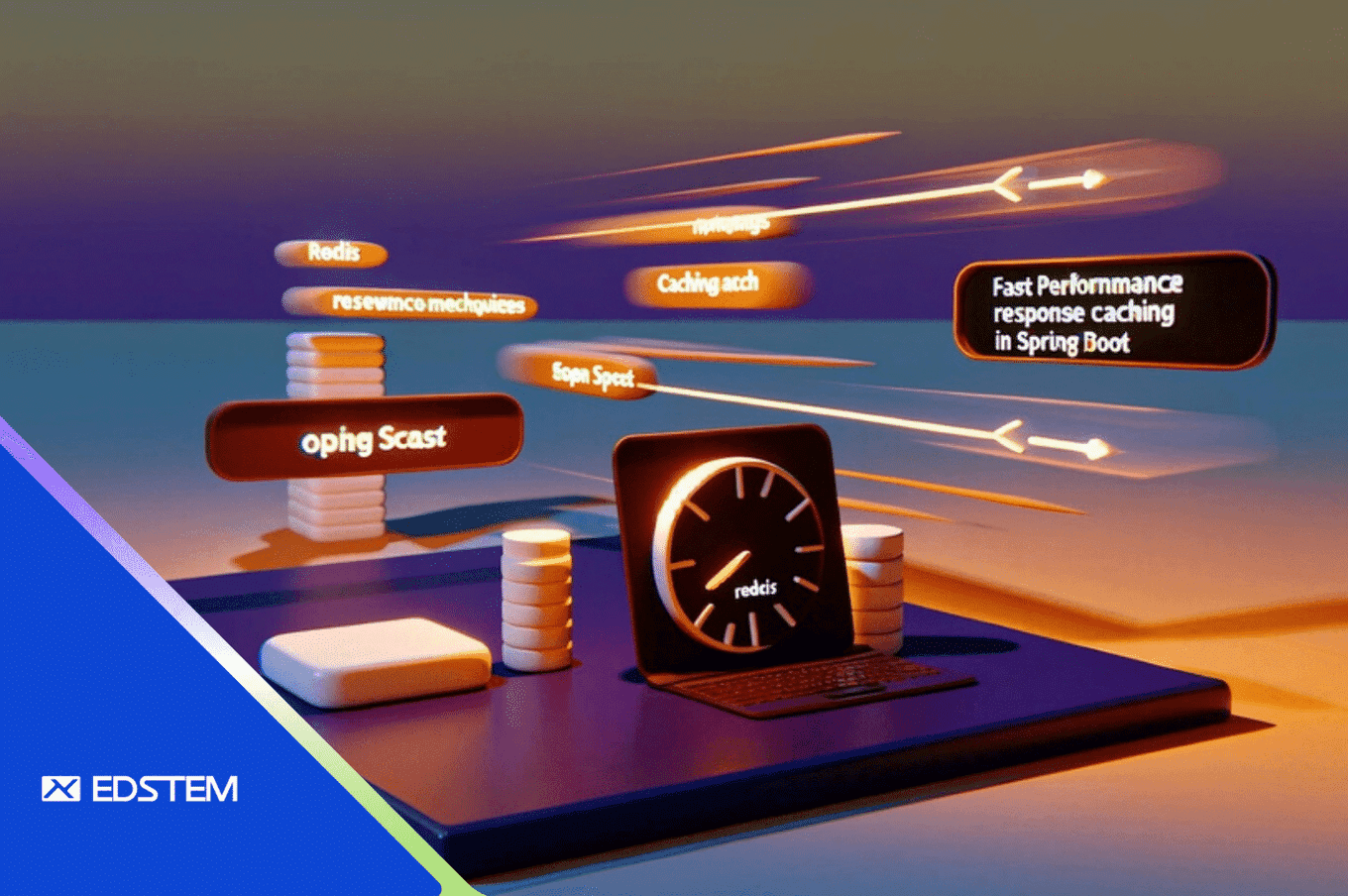Introduction:
In the era of cloud-native applications and microservices, optimizing API performance has become a critical challenge for software engineers and architects. Modern digital experiences demand lightning-fast response times, scalable infrastructure, and efficient resource management. One game-changing strategy to achieve these performance goals is response caching, a technique that has become increasingly crucial in high-traffic enterprise applications.
Redis, a cutting-edge in-memory data store, emerges as a powerful solution for implementing sophisticated caching mechanisms. In this blog post, we'll explore how we leveraged Redis Cache Manager in a Spring Boot application to implement response caching effectively for a huge list of master data specific endpoints that had heavy traffic in production environment. Additionally, we'll introduce a sample Plain Old Java Object (POJO) called Lookup and the Office class to illustrate seamless integration with our caching mechanism.
The Imperative of Response Caching in Modern Software Engineering
Performance Optimization in Microservices
Response caching isn't just a performance enhancement—it's a strategic approach to managing computational resources in distributed systems. By serving frequently requested data directly from memory, organizations can:
- Reduce database load and operational costs
- Minimize network latency
- Improve overall system responsiveness
- Enable more efficient horizontal scaling
Key Performance Metrics
Modern enterprises track several critical performance indicators that directly benefit from intelligent caching strategies:
- Response Time Reduction
- Throughput Improvement
- Resource Utilization Optimization
- User Experience Enhancement
Setting Up Redis Cache Manager in Spring Boot:
Let's start by configuring Redis Cache Manager in our Spring Boot application to unlock the full potential of Redis for response caching.
1. Dependency Setup:
Ensure that you have the necessary dependencies in your pom.xml or build.gradle file:
<dependency>
<groupId>org.springframework.boot</groupId>
<artifactId>spring-boot-starter-data-redis</artifactId>
</dependency>2. Configuration:
Create a configuration class to set up Redis Cache Manager:
import org.springframework.context.annotation.Bean;
import org.springframework.context.annotation.Configuration;
import org.springframework.data.redis.cache.RedisCacheConfiguration;
import org.springframework.data.redis.cache.RedisCacheManager;
import org.springframework.data.redis.connection.RedisConnectionFactory;
import org.springframework.data.redis.serializer.GenericJackson2JsonRedisSerializer;
import org.springframework.data.redis.serializer.RedisSerializationContext;
import org.springframework.data.redis.serializer.StringRedisSerializer;
import java.time.Duration;
@Configuration
public class CacheConfig {
@Bean
public RedisCacheConfiguration redisCacheConfiguration() {
return RedisCacheConfiguration.defaultCacheConfig()
.entryTtl(Duration.ofMinutes(10)) // Cache entries expire after 10 minutes
.serializeKeysWith(RedisSerializationContext.SerializationPair.fromSerializer(new StringRedisSerializer()))
.serializeValuesWith(RedisSerializationContext.SerializationPair.fromSerializer(new GenericJackson2JsonRedisSerializer()));
}
@Bean
public RedisCacheManager cacheManager(RedisConnectionFactory redisConnectionFactory, RedisCacheConfiguration config) {
return RedisCacheManager.builder(redisConnectionFactory)
.cacheDefaults(config)
.build();
}
}In this configuration, we set the default cache entry TTL (time-to-live) to 10 minutes and configure serializers for keys and values.
3. Caching Responses:
Now, let's cache responses of specific endpoints in our Spring Boot application. We'll use the @Cacheable annotation to cache the responses.
import org.springframework.cache.annotation.Cacheable;
import org.springframework.web.bind.annotation.GetMapping;
import org.springframework.web.bind.annotation.PathVariable;
import org.springframework.web.bind.annotation.RequestHeader;
import org.springframework.web.bind.annotation.RestController;
@RestController
public class HRMSController {
private final OfficeService officeService;
@GetMapping("/office/{stateDepartmentId}")
@Cacheable(value = "HRMS_CACHE", key = "#root.methodName+#stateCode+#stateDepartmentId")
public List<Office> getOfficeByStateDepartmentId(
@RequestHeader(name = X_STATE_CODE) String stateCode,
@PathVariable String stateDepartmentId) {
log.info("Fetching office by state department ID: {}", stateDepartmentId);
return officeService.getOfficeByStateDepartmentId(stateCode, stateDepartmentId);
}
}In this example, we're using the @GetMapping annotation to map the endpoint /office/{stateDepartmentId} to the getOfficeByStateDepartmentId method. This method retrieves a list of offices based on the state department ID.
We've also added the @Cacheable annotation to cache the response of this method using Redis Cache Manager. The value attribute specifies the cache name (HRMS_CACHE), and the key attribute generates a unique cache key based on the method name, state code, and state department ID.
Introducing POJOs: Lookup and Office
Now, let's introduce two sample Plain Old Java Objects (POJOs) - Lookup and Office - to illustrate seamless integration with our caching mechanism:
import com.fasterxml.jackson.annotation.JsonTypeInfo;
import lombok.Getter;
import lombok.NoArgsConstructor;
import lombok.experimental.SuperBuilder;
@Getter
@SuperBuilder
@JsonTypeInfo(use = JsonTypeInfo.Id.CLASS, property = "@class")
@NoArgsConstructor
public class Lookup {
private long id;
private String code;
private String name;
private String nameInLocal;
private boolean active;
}import lombok.Getter;
import lombok.NoArgsConstructor;
import lombok.experimental.SuperBuilder;
@Getter
@SuperBuilder
@NoArgsConstructor
public class Office extends Lookup {
private String stateDepartmentId;
private int officeTypeId;
private int districtId;
private int lbId;
}Please pay attention to the JsonTypeInfo.Id.CLASS, this might be required if you face serialization error. Otherwise it can be skipped.
Conclusion
By embracing Redis Cache Manager in Spring Boot applications, organizations can unlock unprecedented levels of performance, scalability, and efficiency. Response caching, powered by Redis, reduces response times and server load by serving cached responses directly from memory. Additionally, introducing POJOs like Lookup and Office enables seamless integration with our caching mechanism, further optimizing our application's performance.The demonstrated approach goes beyond simple caching, it represents a holistic strategy for building resilient, high-performance microservices architectures.
Embrace the power of intelligent caching, and propel your microservices architecture into a new era of performance and efficiency! In summary, by adopting response caching and leveraging powerful caching solutions like Redis in conjunction with POJOs, we can create high-performance Spring Boot applications that deliver exceptional user experiences. Embrace the power of response caching and elevate your application's performance today!




